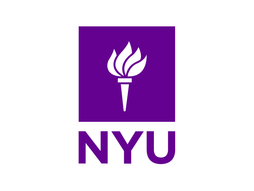10 Tips on Finding Safety Schools as a High Schooler
Why apply to safety schools?
When applying to colleges, you should always plan to apply to a couple of safety schools. Considering safety schools should be a strategic part of your decision making for one main reason: safety schools mitigate risk. Safety schools act as a safety net, ensuring that students will always have a place to go to college if their preferred schools don’t end up accepting them. Admission rates at safety schools tend to be higher than more competitive institutions, providing students with a higher and more reasonable chance of getting in. It is recommended to include a mix of “reach,” “match,” and “safety schools” to create a well-rounded application strategy.
In this article, we’ll go through a list of 10 tips on finding safety schools for high school students.
1. Determine what “safety school” means for you
A school that is a dream school for you might be a safety school for someone else. It is important to operate under your own criteria, not someone else’s. Your academic standing, intellectual curiosity, and personal standards will define what you consider “matches,” “reaches,” and “safeties.” CollegeBoard proposes that if your SAT score falls above the 75th percentile for a specific university, that university should be considered a safety for you. For other people, determining what schools are “safety schools” means looking at acceptance rates—if a school’s acceptance rate is above a certain standard, they’ll consider it a “safety school.” Determine what your standard for a safety school is with the help of your peers, guidance counselors, and advisors. It is only by defining what schools can fall under “safety schools” that you can begin to create your list of safety schools to apply to!
2. Research your state schools
A great safety school option for most students is their state’s public university—for example, for many high schoolers in Massachusetts, a common safety school option is the University of Massachusetts, Amherst. You’ll want to do research on your state’s public university to make sure you find it a good fit. Do you see yourself in one of their academic programs? Do you like their campus culture? Do you see yourself attending school in-state? There are a few bonuses to applying and attending your state school. The first is that you’ll be close to home, with access to family and friends. The second is that if you attend your state’s public university, you’ll only have to pay in-state tuition, which is much more cost-effective than private or out-of-state institutions would be. This is a great option for a safety school that accommodates budget constraints.
3. Establish clear criteria
Like you would with a “reach” school, you should define specific criteria for your safety schools. Factors like class size, extracurricular opportunities, research facilities, weather, and more will all define your college experience. Do research into all of these areas. You want to make sure that your safety school will be a good fit for you, just like your dream school would be a good fit for you, so that if you end up attending your safety school, you’ll still be satisfied with your choice. Establishing clear criteria for what you’re looking for in a safety school will help streamline the selection process.
4. Order your list of criteria
Once you have your list of criteria, put it in order of greatest to least priority. What do you absolutely need in a school and what would you like to have? This priority list may be different for safety schools versus dream schools, so it is important to make both. One of the most important aspects of a school, if not the most important aspect, is the way they cater to your academic and career goals. You should make sure that your safety school has a specific program or major that interests you. Is it an institution that will set you up for the career that you want? Or does it really lack sufficient academic support in your field of interest? When looking at safety schools, make sure they align with your academic interests.
5. Consult your guidance counselor
Your guidance counselor will likely have a general idea of your performance as a student and insight into a wide variety of schools across the country. Putting these together, your guidance counselor might be able to provide valuable insight into suitable safety schools based on your academic profile and aspirations. Guidance counselors often have years of experience and have seen students go to a large variety of different schools. Set up a meeting with your guidance counselor and discuss with them your list of criteria for a safety school. They’ll be able to give you advice on what schools sound right for you. If your school doesn’t have a guidance counselor, you can talk to a teacher or trusted adult.
6. Attend college fairs and information sessions
The best way to get a base list of safety schools to look into is to participate in college fairs and information sessions that your town or high school might host. Here, you’ll be able to engage with representatives from safety schools firsthand to ask any questions you have and learn more about their experience. Run through your list of criteria for a safety school and consider which colleges are able to match these criteria at first glance. Put them on your list of potential safety schools and do more follow up research afterwards—do these schools really fulfill your criteria? Can you see yourself on their campus in the future?
7. Talk to alumni
You might also consider reaching out to alumni from your high school who went to the safety school that you’re considering. Asking about other people’s experiences is the best way to get an honest, open review of a school. Based on their experience, do you think that you’ll enjoy your time at that school? You can also talk to alumni who have no relation to the school that you’re considering—they’ll still know all about the college admissions process! You can ask them how they went about choosing a safety school and learn from their advice and experiences.
8. Utilize online resources
It will be helpful to utilize online tools, such as college search engines, to better understand different safety schools. For safety schools outside of your state that you are unable to visit, a virtual campus tour can be extremely helpful in getting a feel for the school. You can read up on people’s opinions about different schools on online forums and see if their experiences align with what you’re looking for.
9. Consider financial aid options
One great aspect of safety schools is that they are often the more cost-effective options, especially if you are looking at an in-state public university. If you attend a safety school, you might want to capitalize on this cost-saving opportunity and see which schools offer great scholarships, which schools will give you the most aid, etc. This can be a big part of your decision criteria in choosing a safety school.
10. Apply to less safety schools than you do “match” and “reach” schools
Although many people will determine a long list of potential safety schools, most people end up applying to only three or so safety schools. This is because we consider safety schools as schools we will most likely get into. There is no need to apply to ten or more “guarantees.” You’ll want to apply to a few safety schools as a safety net, but conserve most of your time and energy for your applications to “match” and “reach” schools, where you have less of a chance of getting in.
Want to create a strong profile consider – Lumiere Research Scholar Program
If you’d like to consider a rigorous research program open to high schoolers, you may want to consider the Lumiere Research Scholar Program, a selective online high school program for students founded by researchers at Harvard and Oxford. Last year, we had over 4000 students apply for 500 spots in the program! You can find the application form here.
Also check out the Lumiere Research Inclusion Foundation, a non-profit research program for talented, low-income students. Last year, we had 150 students on full need-based financial aid!
Amelia is a current senior at Harvard College studying art history with a minor in economics. She’s enthusiastic about music, movies, and writing, and is excited to help Veritas AIs students as much as she can!













Komentáře